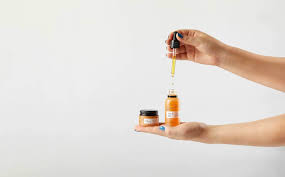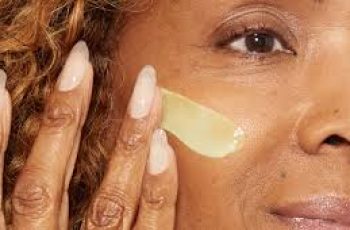
Humectants are ingredients that attract and retain moisture from the surrounding environment, helping your skin stay hydrated and smooth throughout the day.
They’re hygroscopic, meaning they draw in water from either the atmosphere or from deeper skin layers, making them essential in modern skincare routines.
You’ll commonly find humectants in moisturizers, serums, cleansers, and toners—basically any product promising hydration or that dewy, glowing finish.
But while humectants are highly effective at hydrating the skin, it’s essential to understand when and how to use them properly for maximum benefit.
Using humectants incorrectly, especially in dry climates or without the right supporting ingredients, can sometimes lead to more harm than good.
When used the right way, humectants can visibly improve the texture, plumpness, and overall appearance of your skin—often immediately after application.
So, what exactly qualifies as a humectant moisturizer? It’s any hydrating product that pulls water into the outer layers of your skin and locks it there, at least temporarily.
This hydration plumps up fine lines and softens wrinkles, giving the skin a smooth, refreshed, and radiant look that often mimics the sought-after “glass skin” trend.
Examples of humectant-packed moisturizers include Filorga’s NCEF-ESSENCE, Murad’s Targeted Wrinkle Corrector, and EltaMD’s PM Restore Moisturizer, among others.
Hyaluronic acid serums are some of the most popular humectant moisturizers thanks to their lightweight feel and powerful hydration capabilities.
Top options include ISDIN Hyaluronic Booster Ampoules, La Roche-Posay Hyalu B5 Serum, and CeraVe Hydrating Hyaluronic Acid Serum—all known for boosting moisture levels.
Humectants function by drawing moisture either from the air (if it’s humid) or from the lower layers of your skin, pulling it toward the surface to keep your skin hydrated.
A classic example is hyaluronic acid, which can hold up to 1,000 times its molecular weight in water, making it a hydration powerhouse in skincare formulations.
However, in dry climates with low humidity, using humectants without occlusives can backfire, leading to even drier skin as internal moisture is pulled to the surface and evaporates.
To prevent this, combine humectants with occlusive ingredients such as beeswax, petrolatum, or oils that form a barrier and trap the moisture within the skin.
Humectants are technically also emollients—they soften the skin by smoothing rough patches and improving the appearance of flakiness during the skin’s natural turnover cycle.
There are two broad categories of humectants: natural (or plant-derived) and synthetic (or lab-made), both of which are found in a range of skincare and haircare products.
Natural humectants include familiar ingredients like honey, glycerin, aloe vera, hyaluronic acid, lactic acid, and saccharides—all known for their gentle and nourishing properties.
Synthetic humectants often include glycols, like butylene glycol and propylene glycol, and ingredients like sodium lactate and gluconolactone that offer stability and consistency.
The choice between natural and synthetic humectants often depends on formulation goals, ingredient compatibility, skin type, and desired product texture and performance.
Among all humectants, glycerin, hyaluronic acid, and aloe vera are three of the most widely used and studied for their exceptional moisturizing and skin-soothing benefits.
Glycerin is unique because it can travel through aquaporin channels between skin cells, reaching deeper layers that other humectants often cannot penetrate effectively.
Interestingly, glycerin is also the primary humectant found in honey, making it a naturally occurring powerhouse for hydration and skin nourishment.
If you’re shopping for skincare, look for moisturizers that list ingredients such as sodium PCA, panthenol (Pro-Vitamin B5), beta glucan, urea, and lactic acid for top hydration.
Other lab-made humectants include glycolic acid, heparan sulfate, glycereth-26, hexylene glycol, and dipropylene glycol—common in clinical-grade or derm-approved formulas.
It’s also important to clarify that not every oil is a humectant; coconut oil and squalane, for example, are occlusive agents that help seal in moisture rather than attract it.
Coconut oil contains fatty acids that help prevent water evaporation, but it’s comedogenic and not suitable for acne-prone or sensitive skin types due to pore-clogging potential.
Squalane and squalene are also occlusives and emollients, offering shine and softness, but they don’t draw moisture into the skin like humectants do.
To use humectants properly, apply them to damp skin and follow up with a layer of occlusive moisturizer to lock in the moisture and prevent dehydration.
Both oily and dry skin types can benefit from humectants, though dry skin must pair them with barrier-repair ingredients like ceramides and fatty acids for long-term moisture.
Oily skin types often prefer humectants alone, as they hydrate without leaving a greasy residue—perfect for achieving a soft glow without heaviness or clogged pores.
For dry Baumann Skin Types, the ideal routine includes both humectants and occlusives, along with barrier repair ingredients like cholesterol and essential skin lipids.
If you have eczema or severely dry skin, a damaged barrier can’t retain moisture well, so look for formulas that include all three: humectants, occlusives, and barrier-repair agents.
In these cases, a humectant alone isn’t enough and might actually worsen dryness by drawing water out of already moisture-depleted skin layers.
On the other hand, oily skin types can thrive with humectants like hyaluronic acid serums, which offer hydration and a dewy glow without increasing shine or heaviness.
One thing to note is that humectants may reflect light and make the skin appear shinier in photos or videos, so test them out before important events if you have oily skin.
In certain situations, you should avoid humectants altogether or use them sparingly, especially when targeting specific concerns like puffiness or dry climate exposure.
For example, under-eye puffiness is due to fluid retention, so humectants may exacerbate swelling in that area by pulling in more water.
Similarly, in arid environments, humectants should always be paired with occlusives to prevent water loss through evaporation, which could worsen flaking and tightness.
When choosing lip balms, avoid products made of humectants only, as these may lead to dry lips over time by creating a dependency cycle that keeps you reapplying frequently.
Instead, choose lip balms with a mix of humectants and occlusives like beeswax or lanolin to draw in moisture and lock it in for smoother, longer-lasting hydration.
While humectants play a critical role in hydration, they do not repair the skin barrier; for that, you’ll need a dedicated barrier-repair product with ceramides and fatty acids.
In conclusion, humectants are essential in skincare for drawing in moisture, but they must be used wisely—especially when your skin barrier is compromised or your climate is dry.
If you want the best results from your skincare, select products based on your Baumann Skin Type to find the perfect balance of hydration, barrier support, and protection.
The best humectants won’t work in isolation—they shine brightest when used alongside occlusives and emollients to keep your skin plump, smooth, and resilient.
So next time your skin feels thirsty, reach for a humectant—but don’t forget the other supporting players that ensure your skin stays hydrated and happy all day long.


